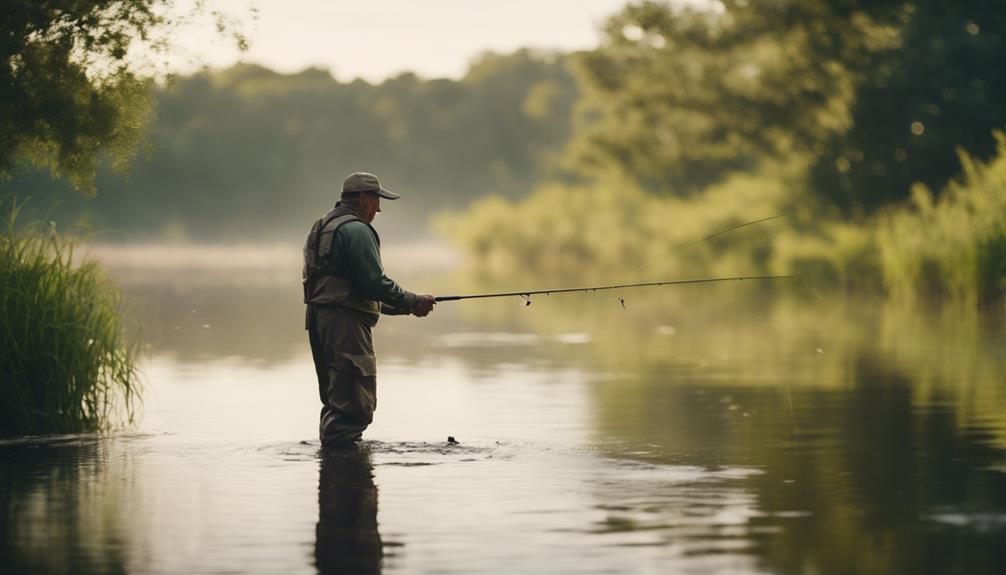Fly fishing is a beloved pastime for many anglers around the world, and one of the most critical components of this sport is the use of fly fishing flies. These specially designed lures mimic the appearance and movement of various aquatic insects, making them essential for attracting fish. In this comprehensive guide, we will explore the different types of fly fishing flies, tips for choosing the right ones, and techniques for effectively using them.
Understanding Fly Fishing Flies: What Are They?
Fly fishing flies are artificial lures made to imitate the natural prey of fish. They are crafted from various materials, including feathers, fur, and synthetic fibers, designed to float on the water’s surface or sink below. Each fly is tied to a fishing line using methods that allow it to mimic the behavior of living insects and other aquatic organisms. Understanding the anatomy of fly fishing flies is crucial for anglers, as it affects how the flies interact with water and, ultimately, how successful they are in attracting fish.
Types of Fly Fishing Flies: A Comprehensive Overview
There are numerous types of fly fishing flies, each designed for specific fishing conditions and targeted species. The two main categories are dry flies and wet flies. Dry flies float on the water’s surface and are used to imitate insects that are hatching or resting on the top. Wet flies, on the other hand, sink below the surface to mimic nymphs or other aquatic life. Additionally, streamers are larger flies meant to imitate baitfish. Other types include nymphs, which represent immature aquatic insects, and terrestrials, designed to mimic land-based insects that may fall into the water. Understanding these types will help you select the right flies for your fishing adventures.
Choosing the Right Fly Fishing Flies: Factors to Consider
When selecting fly fishing flies, several factors must be considered to ensure a successful outing. First, consider the type of fish you are targeting. Different species have distinct feeding habits and preferences, so it’s essential to choose flies that mimic their natural food sources. Second, take into account the season and time of day. Many insects have seasonal hatches, and matching the hatch with the appropriate fly can significantly increase your chances of success. Lastly, consider the water conditions—clear, murky, fast, or slow—as these factors can influence which flies will be most effective.
The Importance of Matching the Hatch in Fly Fishing
“Matching the hatch” is a crucial concept in fly fishing that refers to using flies that closely resemble the insects currently hatching or present in the water. This technique involves observing the water and identifying the size, shape, and color of the insects fish are feeding on. By selecting fly fishing flies that match these characteristics, anglers can increase their chances of enticing fish to bite. This strategy requires knowledge of local insect life cycles and the ability to adapt to changing conditions on the water.
Tying Your Own Fly Fishing Flies: A Rewarding Skill
For many anglers, tying their own fly fishing flies is both a practical skill and a creative outlet. Tying flies allows you to customize colors, sizes, and patterns to better match local conditions and preferences. Moreover, it can be more cost-effective than purchasing flies from a store. Beginners can start with simple patterns and gradually progress to more complex designs. There are many resources available, including online tutorials and local fly-tying workshops, to help you learn this rewarding craft. Developing this skill can also deepen your connection to the sport and enhance your fishing experience.
Tips for Using Fly Fishing Flies Effectively
Once you have selected the right fly fishing flies, employing effective techniques is vital for success. Casting is one of the most important skills; practice your casting technique to ensure accuracy and distance. Additionally, varying your retrieve speed can mimic the natural movement of prey, making your fly more appealing to fish. Don’t forget to pay attention to the water’s surface; sometimes, a subtle twitch can trigger a strike. Experimenting with different flies and techniques will help you discover what works best in various conditions.
Maintaining Your Fly Fishing Flies: Care and Storage Tips
Proper maintenance of your fly fishing flies is essential for prolonging their lifespan and ensuring they perform well on the water. After each fishing trip, inspect your flies for any damage or wear. Clean them gently to remove dirt or debris, and store them in a fly box with compartments to prevent tangles and damage. Avoid exposing them to excessive heat or moisture, as this can degrade materials over time. By taking care of your flies, you’ll ensure they remain effective for many fishing trips to come.
Conclusion: Elevate Your Fly Fishing Experience with the Right Flies
In conclusion, fly fishing flies are a fundamental aspect of successful fly fishing. Understanding the different types, how to choose the right ones, and employing effective techniques can significantly enhance your fishing experience. Whether you are a seasoned angler or new to the sport, mastering the art of fly selection and usage will lead to more successful outings on the water. Take the time to learn about local insect life and experiment with different flies and techniques, and you’ll find that fly fishing can be a rewarding and enjoyable pursuit. Happy fishing!
